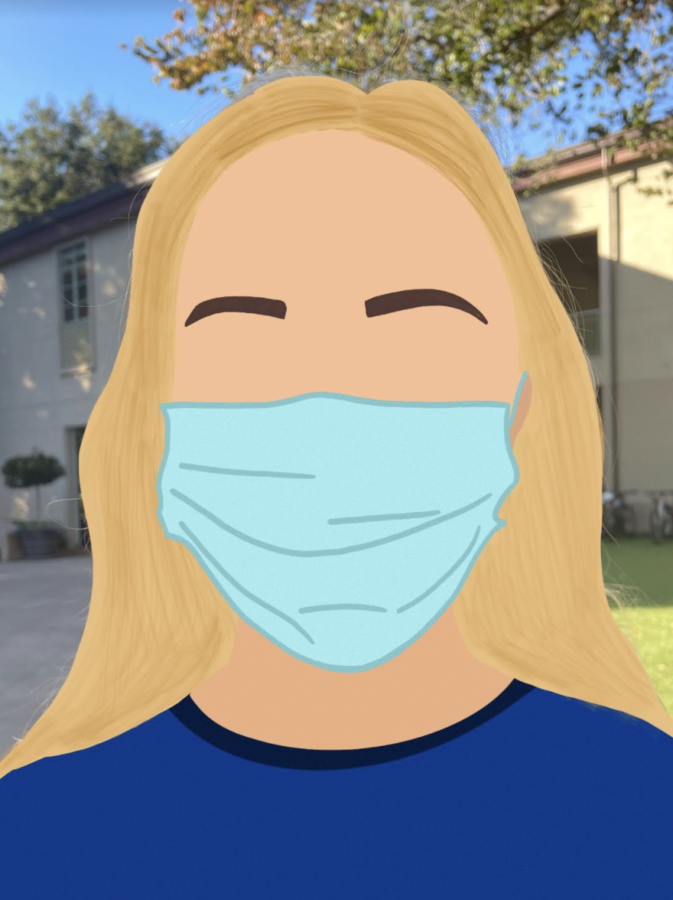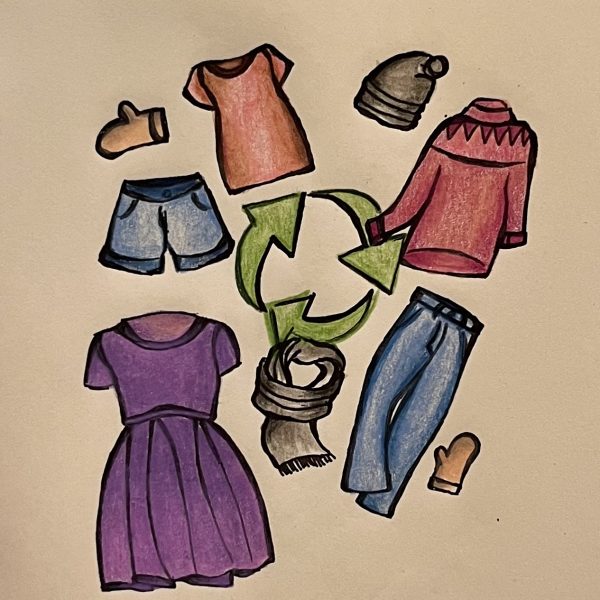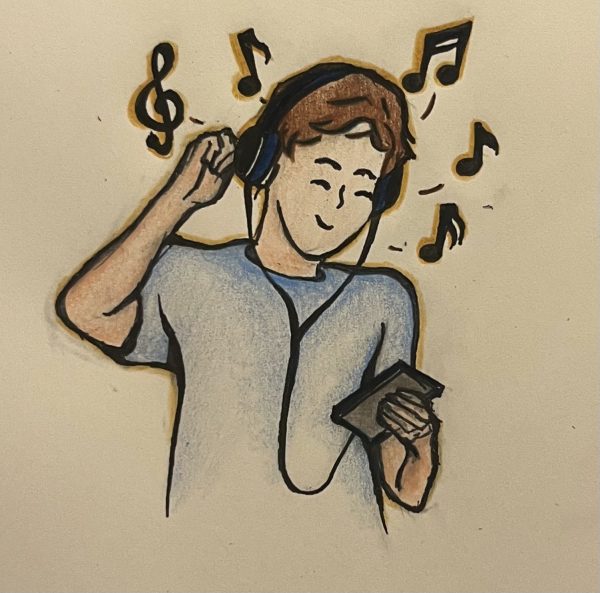What is the Future of Masks?
With the COVID-19 pandemic normalizing masks, they might be a permanent part of future daily life. Staff illustration: Sophie Fang.
November 30, 2021
Masks: they’ve been a predominant feature on people’s faces since April 2020. We’ve seen bandanas, disposable masks, homemade and store-bought cloth masks. Masks have become so normalized that we often forget they’re even there. But for how much longer?
Mask-wearing has become a quintessential part of American society in order to slow and prevent the spread of COVID-19. The pandemic is still in full force, but with vaccines becoming an option for more and more of the population, the world is taking strides towards a pandemic-free world. According to CNN, the FDA approved 5-11 year olds to receive the Pfizer vaccine is one step closer to this reality.
Masks have proven to slow the spread of COVID-19. According to an article from the University of California, San Francisco, once masks were mandated in 15 states and Washington, D.C., their COVID-19 growth rates dropped from 2% to 0.9%.
In addition to slowing the spread of COVID-19, masks also impacted the spread of other diseases. The Centers for Disease Control and Prevention recorded 1,316 flu cases between Sept. 2020 and Jan. 2021 in comparison to nearly 130,000 cases in the same span of time the previous year, according to the Harvard School of Public Health. The Harvard School of Public Health attributes this dramatic drop in numbers largely to mask-wearing and social distancing policies.
In other parts of the world, wearing face masks was not an anomaly born from COVID-19. According to the Huffington Post, long before the COVID-19 pandemic, many citizens in East Asian countries wore face coverings when they were feeling sick in order to protect those around them.
Face masks don’t need to necessarily be erased from our lives once the pandemic is over or contained as much as the flu or common cold. Wearing a mask doesn’t cause the wearer or anyone around them harm. In fact, they have proven to do just the opposite, so there isn’t much of a point in eradicating them once we finally get out of the pandemic.
People shouldn’t have to wear masks to the extent that they are now in future years. However, wearing them in the fall and winter, when cases of the common cold and the flu tend to spike, could — and has — helped to minimize their spread. At the beginning of COVID-19, mask-wearing was accompanied by a stigma of contagion: if someone wore a mask, they were admitting to the rest of the world that they were sick and that they could get others sick as well. At this point, over a year and a half into this pandemic, masks are pretty normalized and are seen as an important way to protect each other. Because of this idea, people won’t associate mask-wearing with sickness but rather an act of protection and safety.
Masks are a small step that we take every day to protect ourselves from COVID-19 and should continue to be a step we take in the future to protect ourselves from the spread of disease.













